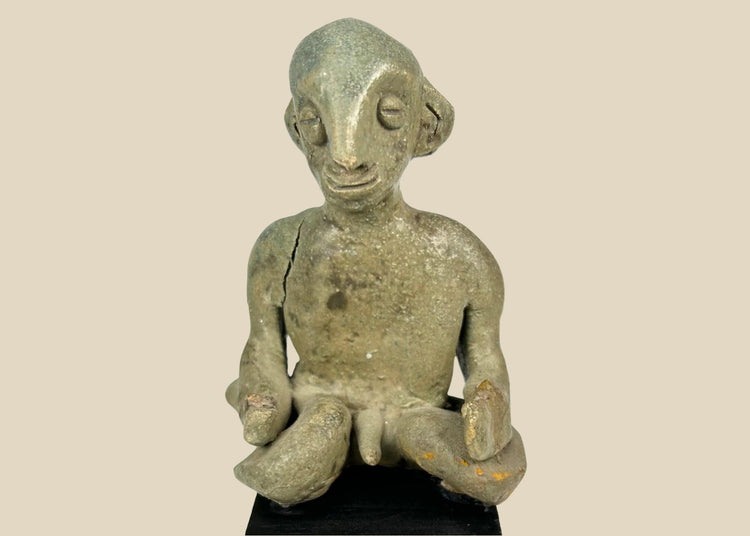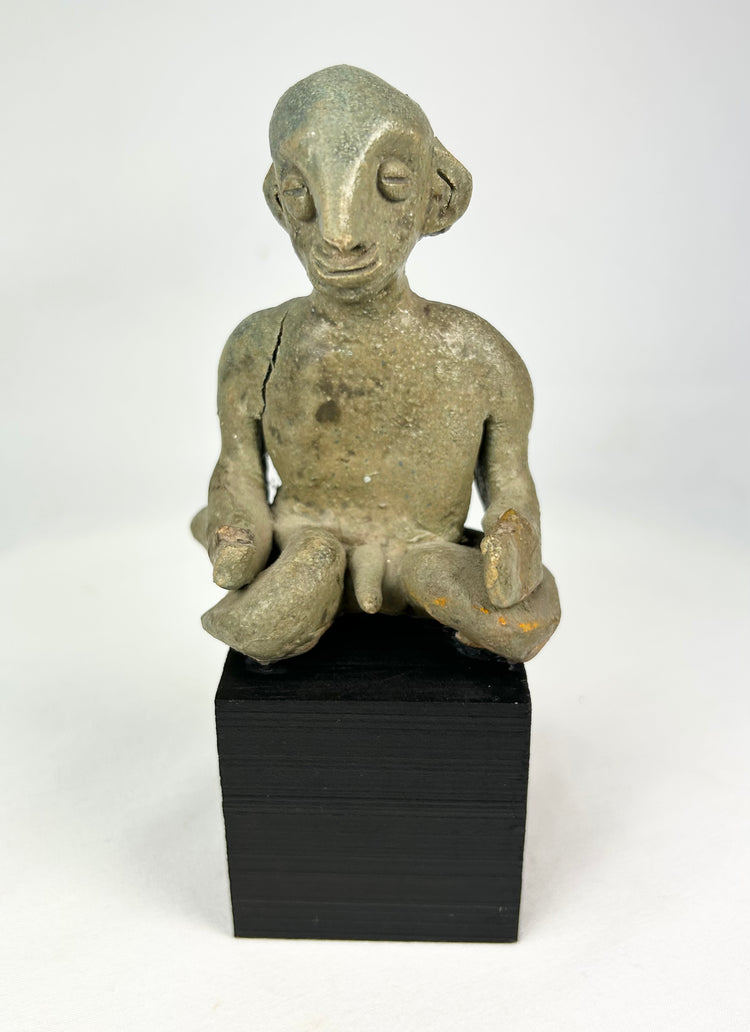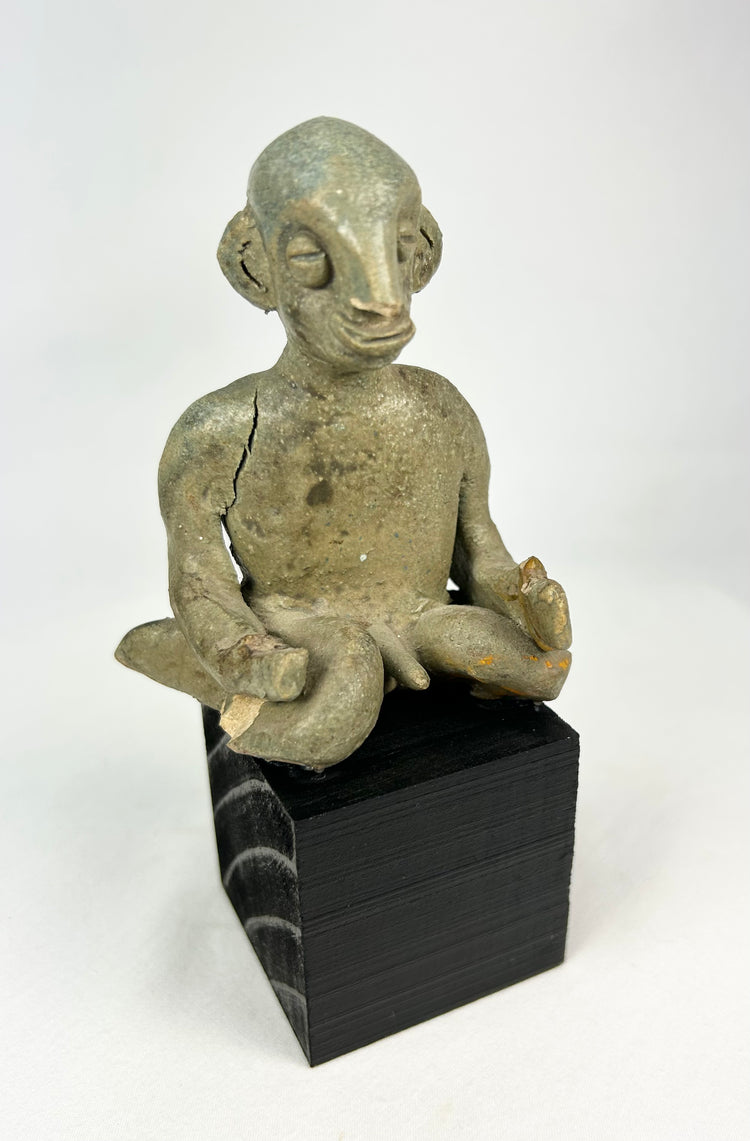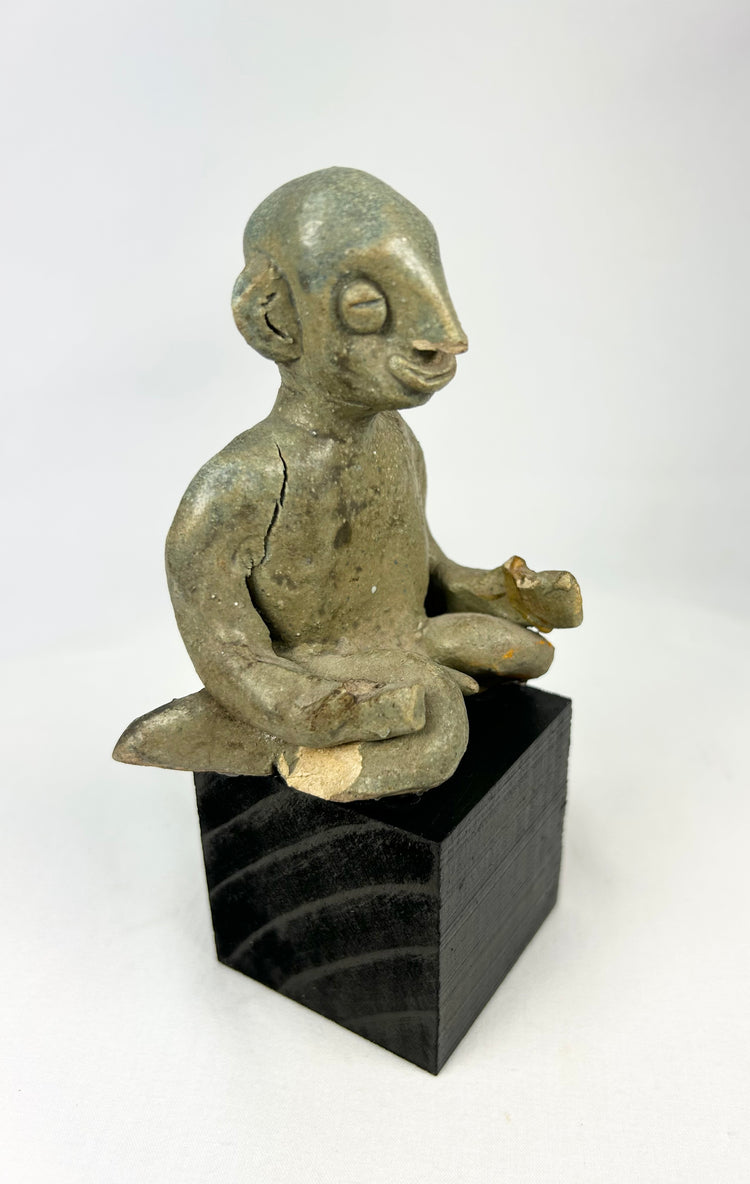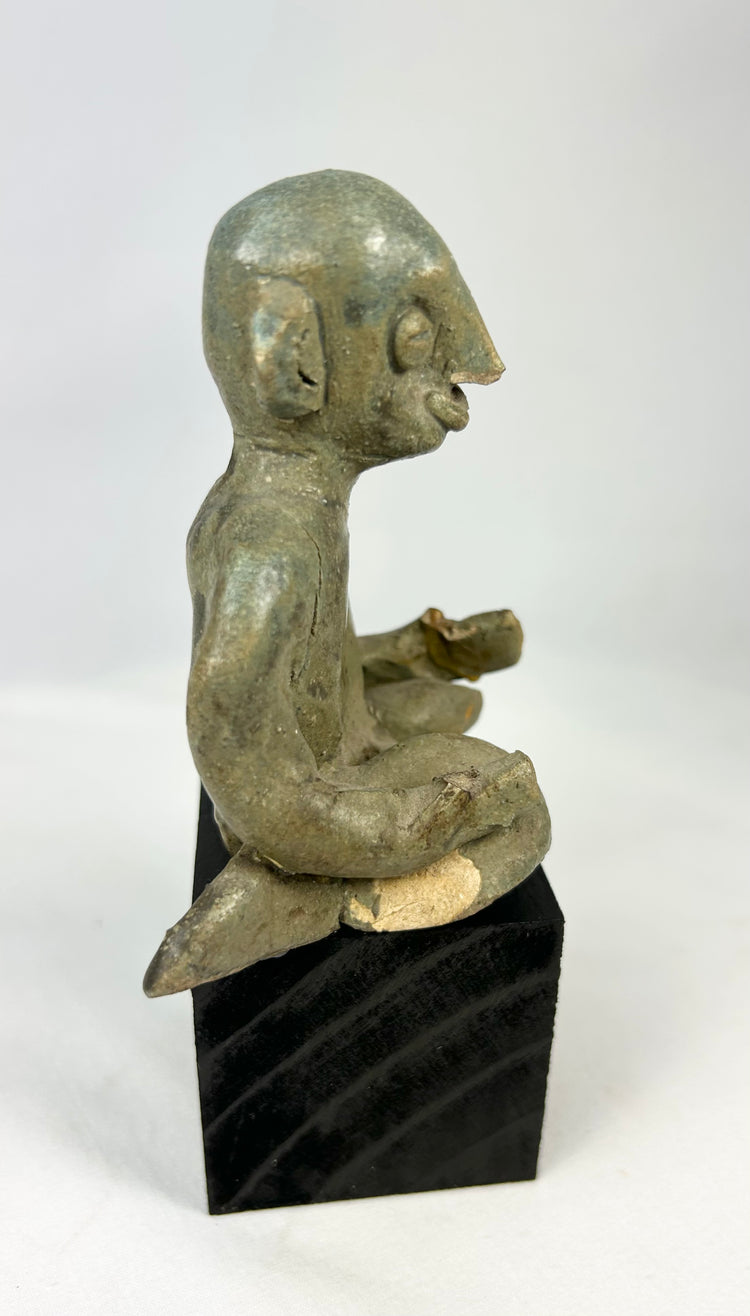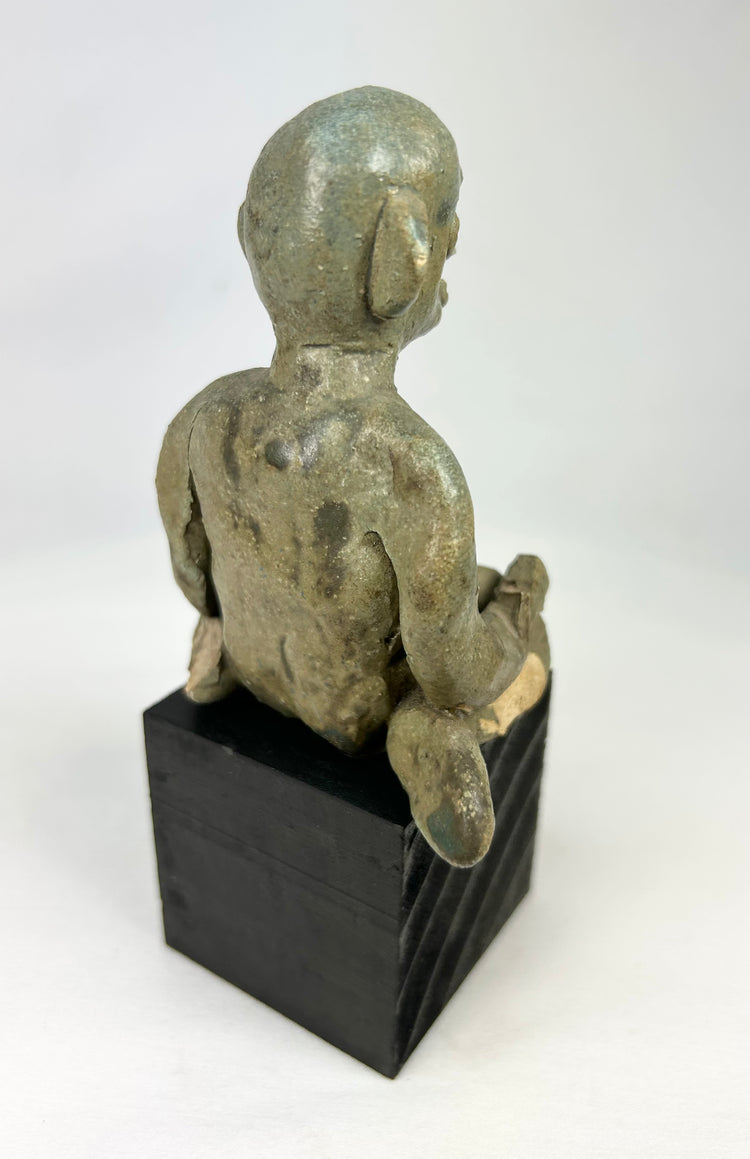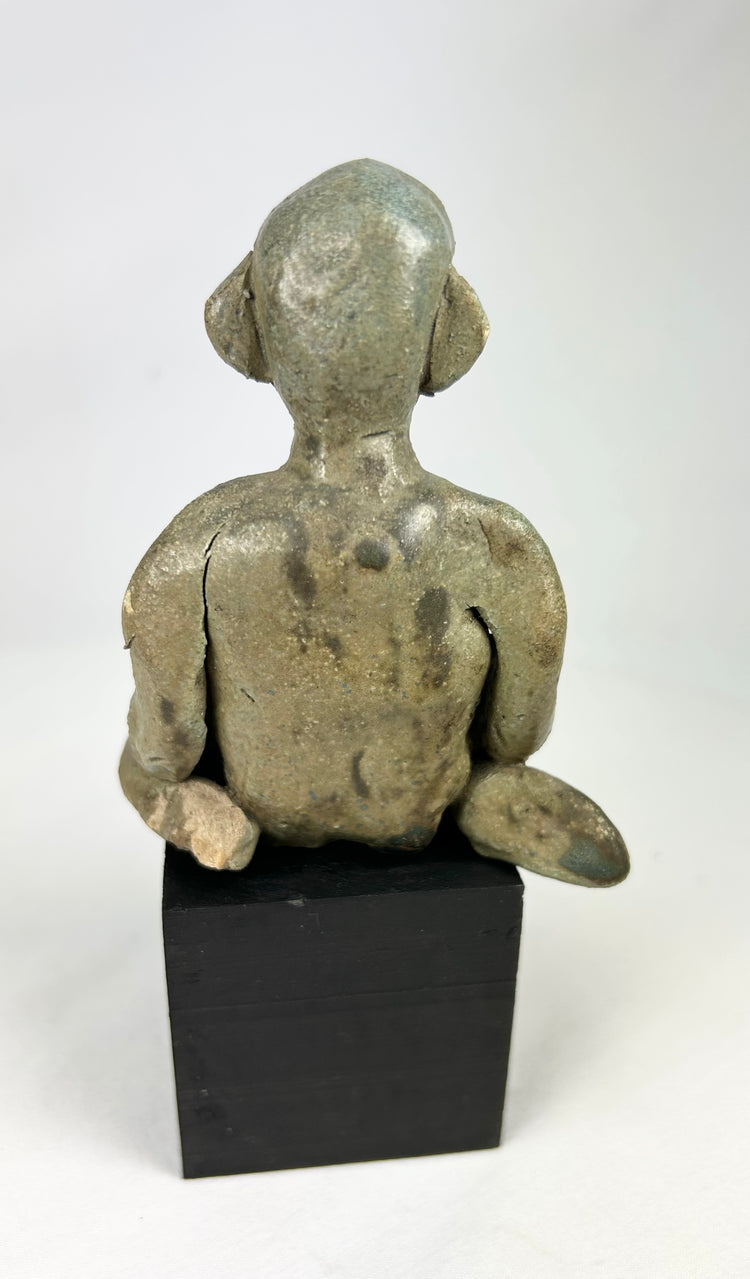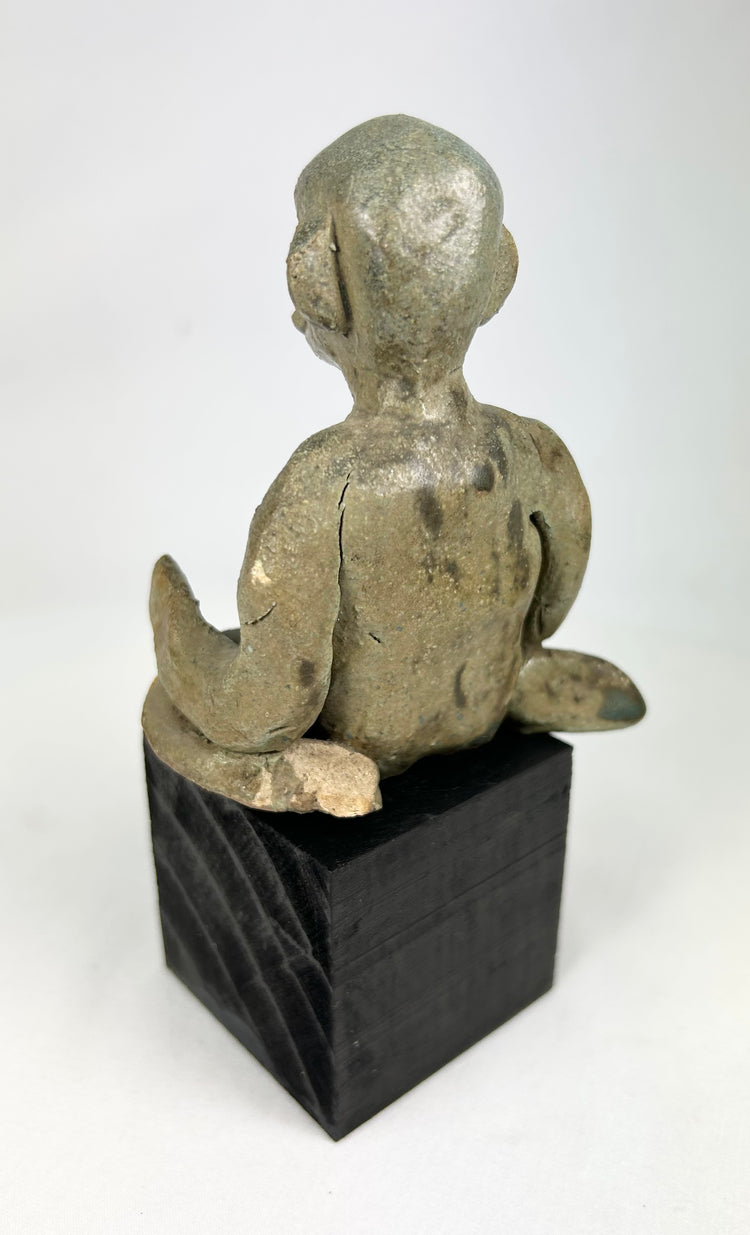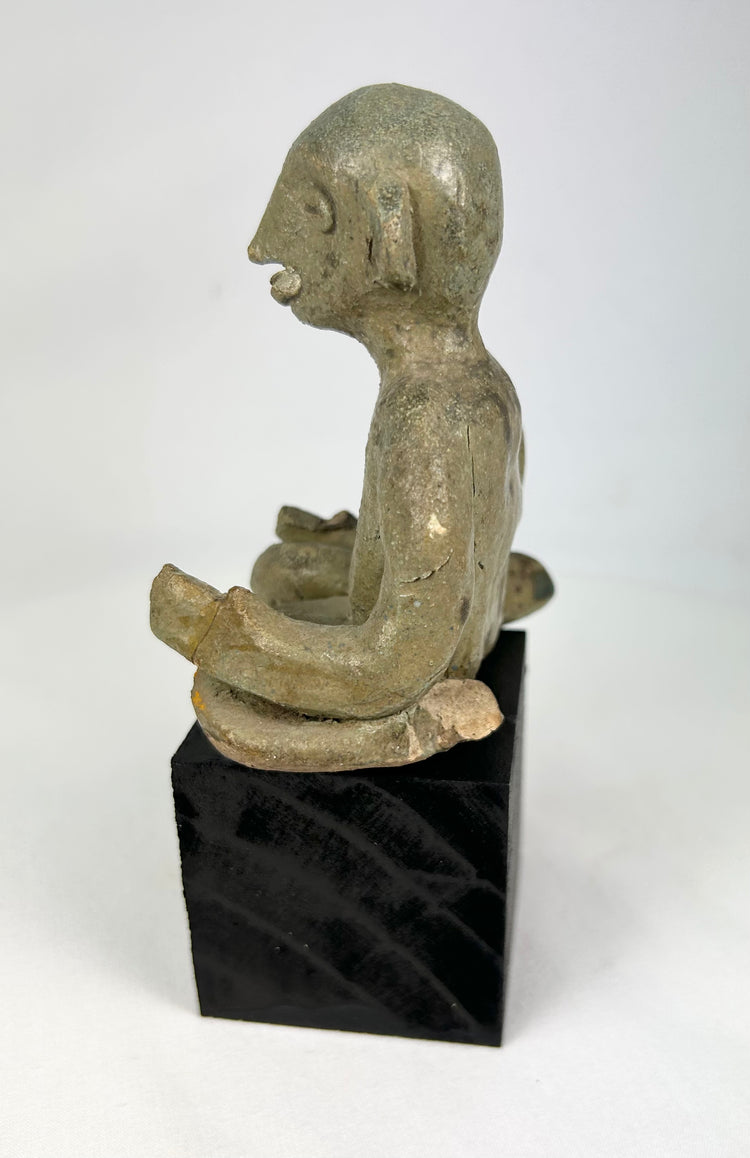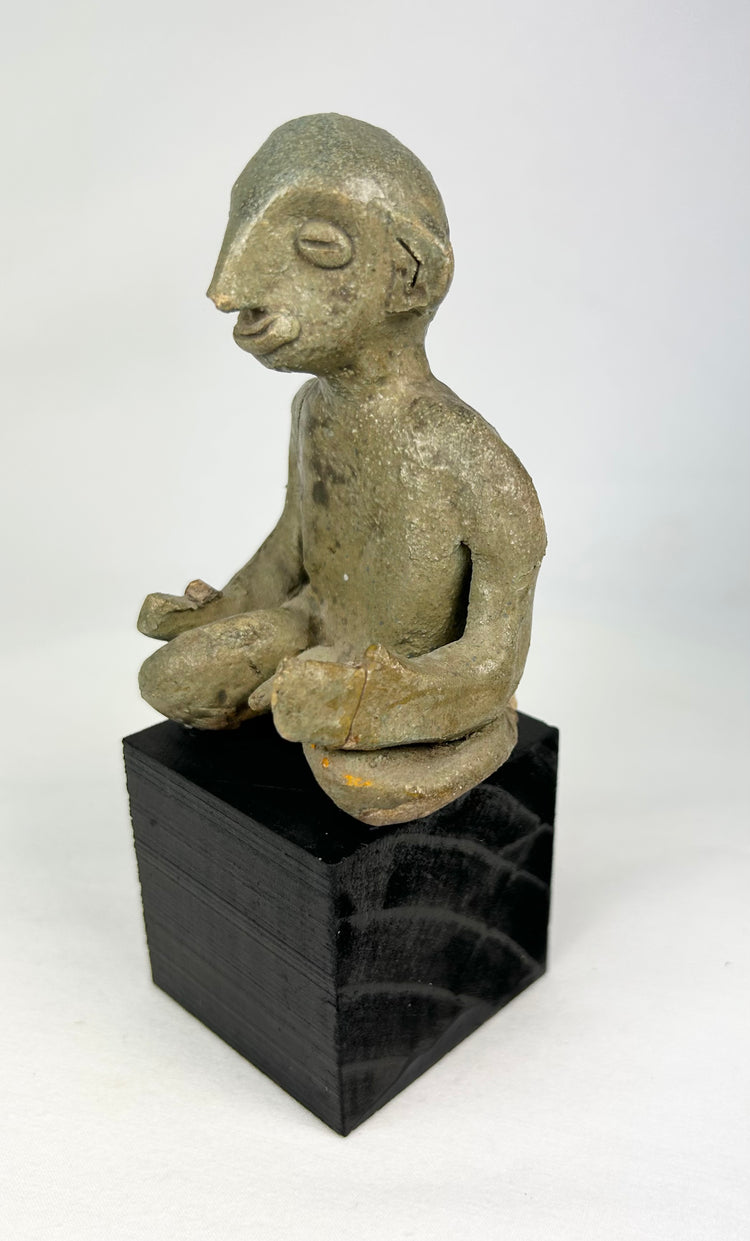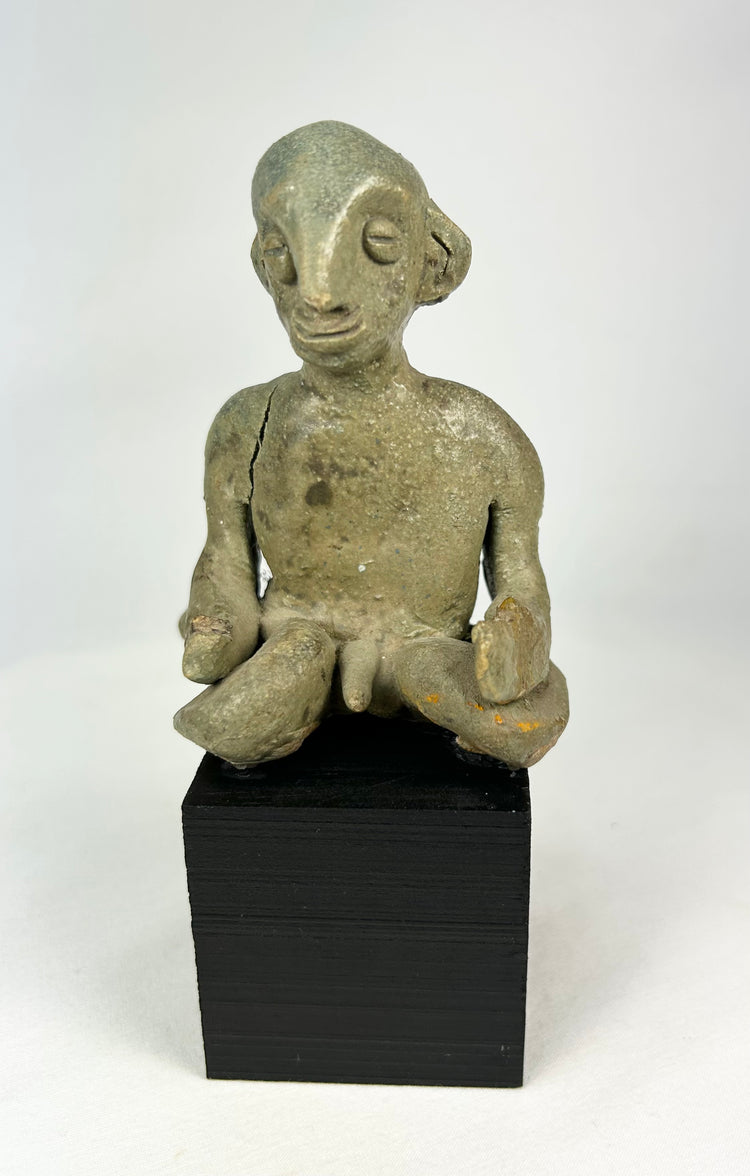Nayarit Chinesco | Seated Male Figure | West Mexico | Circa 100 BCE–300 CE
Description
More
Less
Historical Context & Origin
Region: West Mexico, Nayarit (Shaft-Tomb tradition; Chinesco type, likely Ixtlán del Río area)
Material: Hand-modeled terracotta, buff/gray body with traces of red/orange pigment; earthen/mineral accretions; mounted on a modern wood display block
Period: Late Formative to Early Classic, ca. 100 BCE – 300 CE
Description
Compact West Mexican seated male figure modeled with the serene, mask-like face and slit eyes characteristic of the Nayarit Chinesco corpus. He sits cross-legged with hands resting forward on the knees; the genitalia are clearly indicated. The head is ovoid with a prominent, pinched nose and small ear ornaments. Surfaces show a soft, stone-like patina with traces of original red/orange slip around the knees and hands, now mellowed by age with scattered mineral deposits.
The form and posture—calm, introspective, and compact—are closely aligned with Chinesco figures placed in shaft-tomb contexts in Nayarit.
Presented on a modern black wood block stand (included).
Features
- West Mexican Nayarit Chinesco seated figure (male)
- Hand-modeled terracotta with buff/gray surface and pigment remnants
- Classic traits: slit eyes, pinched nose, compact crossed-leg pose
- Authentic age indicators: earthen/mineral accretions and burial patina
- Custom modern stand for display
Cultural Significance
Figures of this type were interred in shaft-tomb burials throughout West Mexico. They are widely interpreted as ancestors or ritual participants whose presence animated the tomb assemblages, embodying community identity and continuity.
Condition
Good archaeological condition with expected age wear: stable age fissures (notably at the left shoulder/torso), minor losses to hand tips and edges of the legs, scattered abrasions, and earthen/mineral deposits throughout. No active instability; presents beautifully on the stand.
Dimensions (approximately)
Height: 6 in
Width: 2 in
Depth: 2 in
Age
Ca. 100 BCE – 300 CE, West Mexican Shaft-Tomb tradition (Nayarit, Chinesco type)
Description
Historical Context & Origin
Region: West Mexico, Nayarit (Shaft-Tomb tradition; Chinesco type, likely Ixtlán del Río area)
Material: Hand-modeled terracotta, buff/gray body with traces of red/orange pigment; earthen/mineral accretions; mounted on a modern wood display block
Period: Late Formative to Early Classic, ca. 100 BCE – 300 CE
Description
Compact West Mexican seated male figure modeled with the serene, mask-like face and slit eyes characteristic of the Nayarit Chinesco corpus. He sits cross-legged with hands resting forward on the knees; the genitalia are clearly indicated. The head is ovoid with a prominent, pinched nose and small ear ornaments. Surfaces show a soft, stone-like patina with traces of original red/orange slip around the knees and hands, now mellowed by age with scattered mineral deposits.
The form and posture—calm, introspective, and compact—are closely aligned with Chinesco figures placed in shaft-tomb contexts in Nayarit.
Presented on a modern black wood block stand (included).
Features
- West Mexican Nayarit Chinesco seated figure (male)
- Hand-modeled terracotta with buff/gray surface and pigment remnants
- Classic traits: slit eyes, pinched nose, compact crossed-leg pose
- Authentic age indicators: earthen/mineral accretions and burial patina
- Custom modern stand for display
Cultural Significance
Figures of this type were interred in shaft-tomb burials throughout West Mexico. They are widely interpreted as ancestors or ritual participants whose presence animated the tomb assemblages, embodying community identity and continuity.
Condition
Good archaeological condition with expected age wear: stable age fissures (notably at the left shoulder/torso), minor losses to hand tips and edges of the legs, scattered abrasions, and earthen/mineral deposits throughout. No active instability; presents beautifully on the stand.
Dimensions (approximately)
Height: 6 in
Width: 2 in
Depth: 2 in
Age
Ca. 100 BCE – 300 CE, West Mexican Shaft-Tomb tradition (Nayarit, Chinesco type)
You May Also Like




























